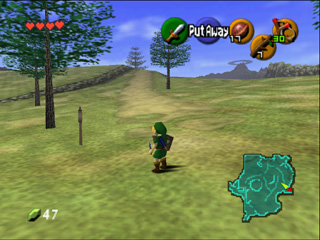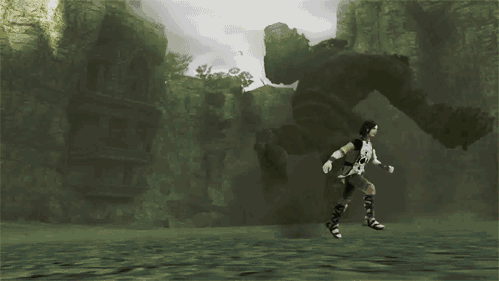Our team spent a big part of this semester doing pre-production. Here are some of the lessons we learned:
Pre-production is an important part of the
game development process that is often overlooked. It is a deceptively easy
task.
Different developers approach
pre-production in different ways. In the best case scenario, a small group from
the team is set aside to do pre-production for the next game IP that will
happen several years down the road. However, in most cases developers have a
limited amount of time that is shared between pre-production and production,
and balancing the two is a hard task.
The big question is: how much is too much
or too little pre-production?
Doing Too Little Pre-production
Pre-production is planning for the
project, and having little or no planning is often a bad thing. There's an
entire Extra Credits episode dedicated to the dangers of doing too little
pre-production. Without a style guide, artists on the team will end up
producing assets of different styles. Programmers who jump in production too
fast will end up with pieces of systems that don’t work together properly. More
importantly, without a central shared vision individuals will have trouble
making key decisions because they don't feel like they know what the final
product should be like.
Doing Too Much Pre-production
With short projects with close deadlines
(such as BVW or semester long projects), it's difficult to fall too hard into
the rut of doing too much pre-production. But with year-long projects or
projects that have an indefinite deadline, it's easy to accidentally go
overboard.
This is a problem to especially to new developers.
Without strict deadlines (as the way it is during production), productivity can
drop drastically. Often a project with too much planning won’t even make it to
the production stage.
Another problem is that a lot of
lessons are learned through the iteration process of building the game. New
problems and solutions pop up during the production process that hazy or
undefined during pre-production. Very few games end up exactly as they were
planned. Having too much planning means throwing away a lot of work when those
plans don't actually pan out in reality.
The Meat of the Problem
Speaking from experience, my biggest fear
with pre-production is trying to answer too many questions. Pre-production is used
to help increase the chances of success for final product, but sometimes it can
be a sinkhole in and of itself. For example, here are some of the problems I
wanted to solve by the end of my pre-production process:
- Is this idea interesting? Is it
compelling to a large enough demographic?
- What's unique about it? Can I explain
the game in one sentence that captures people's interest?
- Is the art compelling enough to
attract people on its own? Is the narrative?
- Are the elements of gameplay, story,
and narrative cohesive as whole?
- Is the art style distinguished enough
to be easily recognizable?
- Is the game different enough from
other similar games?
- Is the game in scope with the size of
the team?
- Is the team motivated by the
game?
- Is there a good chance this game will
go viral?
- Will it make money?
Unless there is special time set aside for
a small group of people to just work on pre-production for a long time (the
same way animation studios work on a concept in small teams a few years before
the bulk of the production work is done), it will be difficult and almost
impossible to answer all these questions in a timely manner. Since all these
questions are intertwined together, it’s hard if not impossible to answer all
these questions at the same time either.
Creativity Deadlock
It’s easy to fall in a creativity deadlock
when you try to answer all these questions all at the same time. Creativity
deadlock is when different parts of the creative process rely on each other to
be created first in a cyclic fashion. For example, suppose your goal (as the
lead artist) is to find a distinguished and compelling art style. However, the
art style is heavily influenced by the narrative of the game. And in most
games, the narrative (being the most malleable element in the game) is molded
around the rest of the game. And you can’t build the game first without art.
So instead of trying to answer all the
uncertainties about the game during pre-production, is there a better way to do
pre-production? There is no single
answer, but there are some key points to remember about pre-production.
Cohesive Vision
The
single most important part of pre-production is to make sure the team has as
close a vision to each other as possible. Game ideas are notoriously hard to be
interpreted in the same way. Without having the same vision, people will have
trouble creating cohesive work. It’s very time consuming when problems of
having different vision pop up later in the process.
An unfortunate aspect of getting to a
cohesive vision is to have a lot of team meetings. It’s hard to tell if people
are on the same page without talking and discussing together, and shared
documents can easily be interpreted differently. Usually, having a lot of
meetings seems unproductive (especially during the production cycle), but
meetings are an essential part of the pre-production process unless you are
working alone.
Trust the Team
A big part of
walking into production without answering all the unknowns is trusting the
team. If you have confidence in the team, you know that they can create a good
game without the path to success completely laid out to them. Trusting the team
to iterate well during production is already a given, so it’s also possible to
trust them a bit more in unwrinkling the kinks from pre-production.
Learning by Building
A lot
of game design philosophies such as Jason Vandenberghe’s “Fail faster, and
follow the fun” and Superbrother’s “Less talk, more rock” are telling people
the same thing. A lot of design can only be done by building and iterating on
the game.
Prototyping is a
big part of pre-production, but know that prototyping can’t answer all the
questions. If you do build enough prototypes to answer all your questions, you
are more or less in production already.
Have a Clear Reason for
Success
While it’s okay to
be uncertain about success, it’s important to have one or two good reasons why
your game will succeed. For example, a lot of different people give a similar
piece of advice to indie developers: before you build your game, know what is
unique about it and how to market it. Likewise, if you are creating a game for
a client, know what part your client likes about your game and try not to
change that.
Motivation for the Team
A team should be
inspired by the end of pre-production and excited to start working on the game.
If your artists are not inspired, they will create less interesting work (or
think that they are creating sub-par work). Sometimes this happens because
their art style doesn’t really fit the game vision created from pre-production.
Having motivation helps improves production efficiency and quality.
To conclude, here is a checklist of some things to have by the end
of pre-production. Not all of these are necessary (and a lot of more things you
need are not on this list), but I think these are some pretty important ones
that I haven’t mentioned so far.
-
Know
who is responsible for important decisions
-
Have
an art style guide
-
Set
up an art asset pipeline
-
Know
what technology you are using and why
-
Have
short prototypes to show gameplay works

















